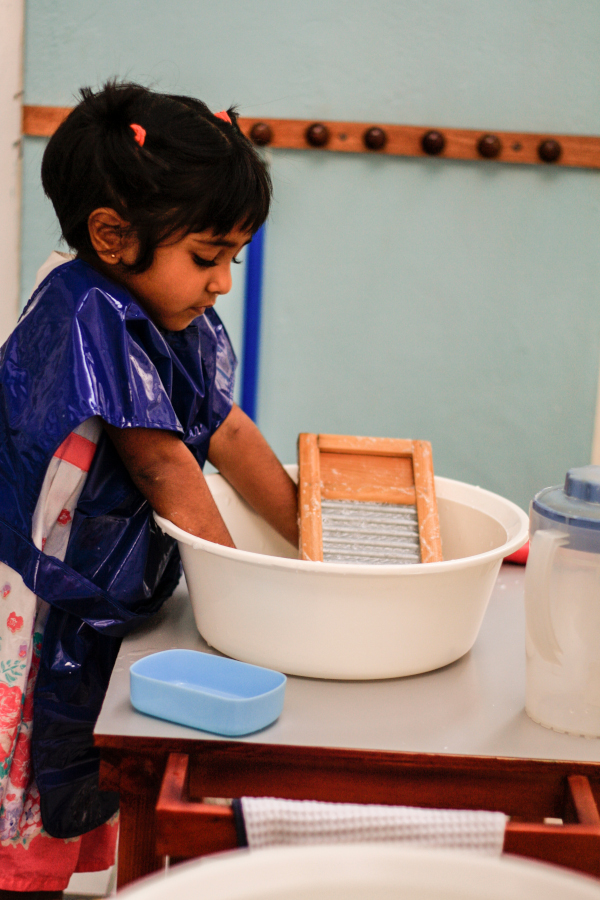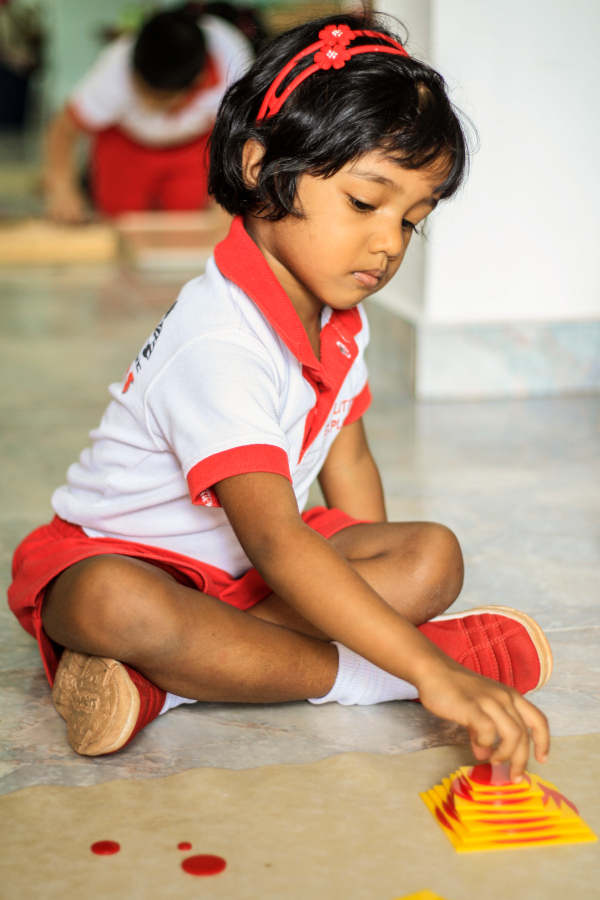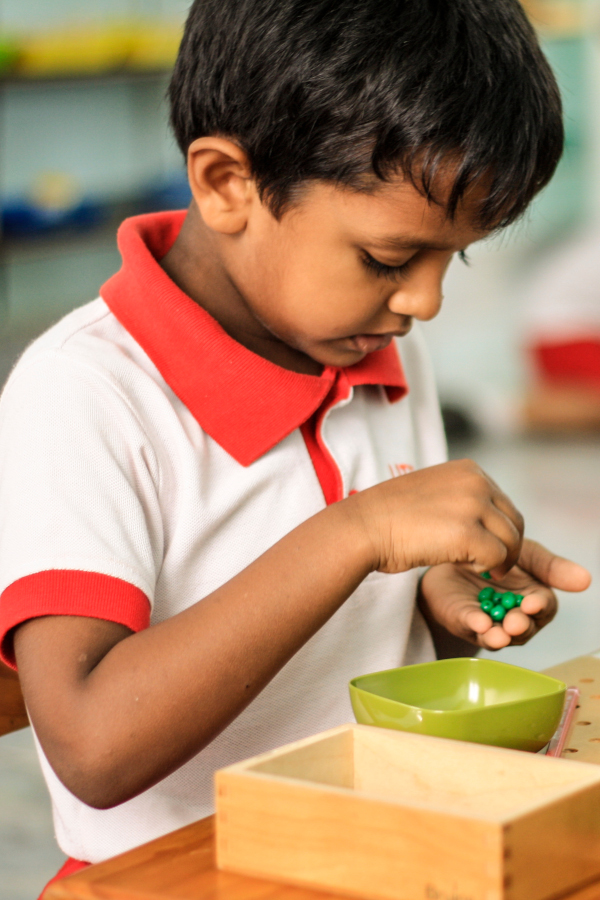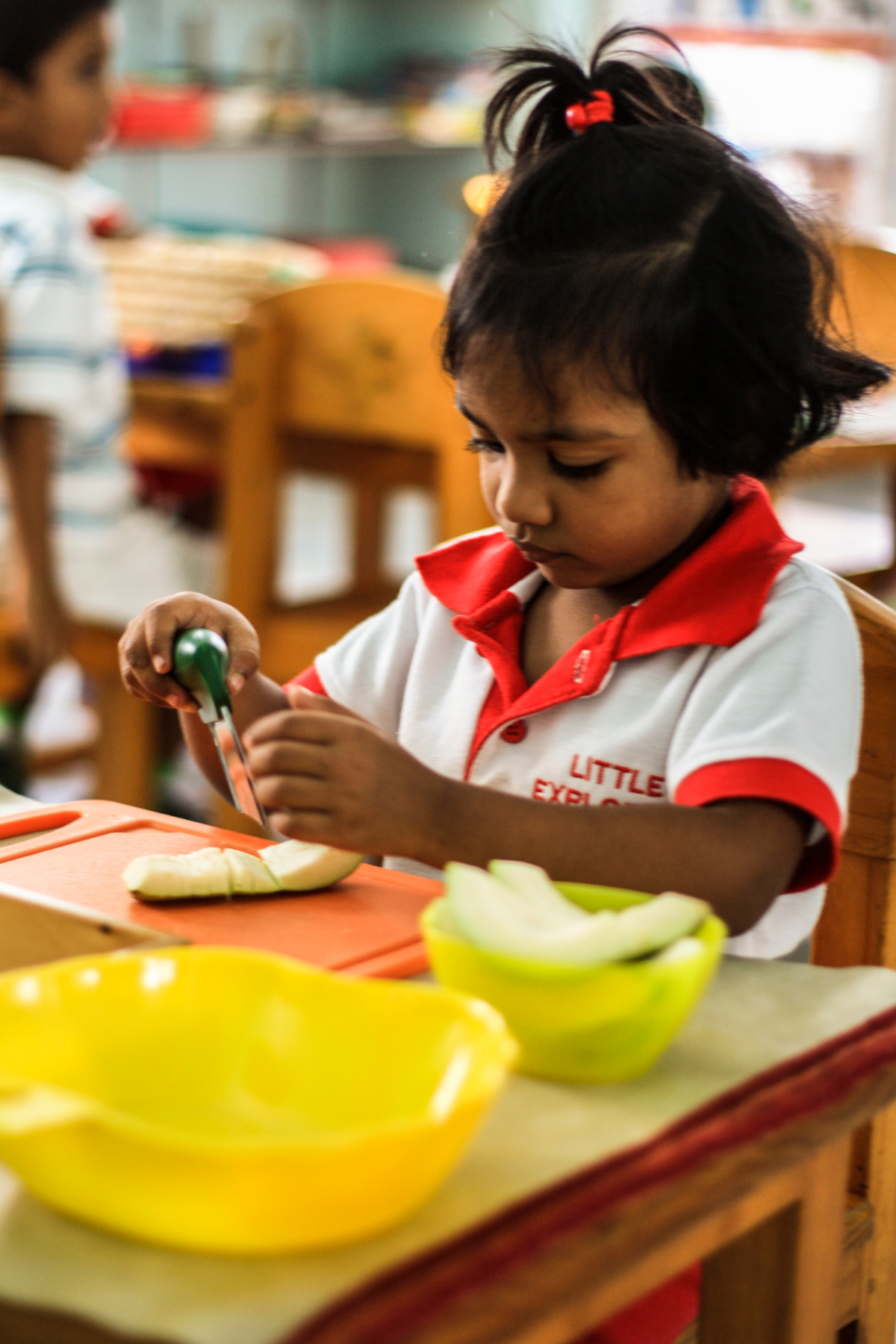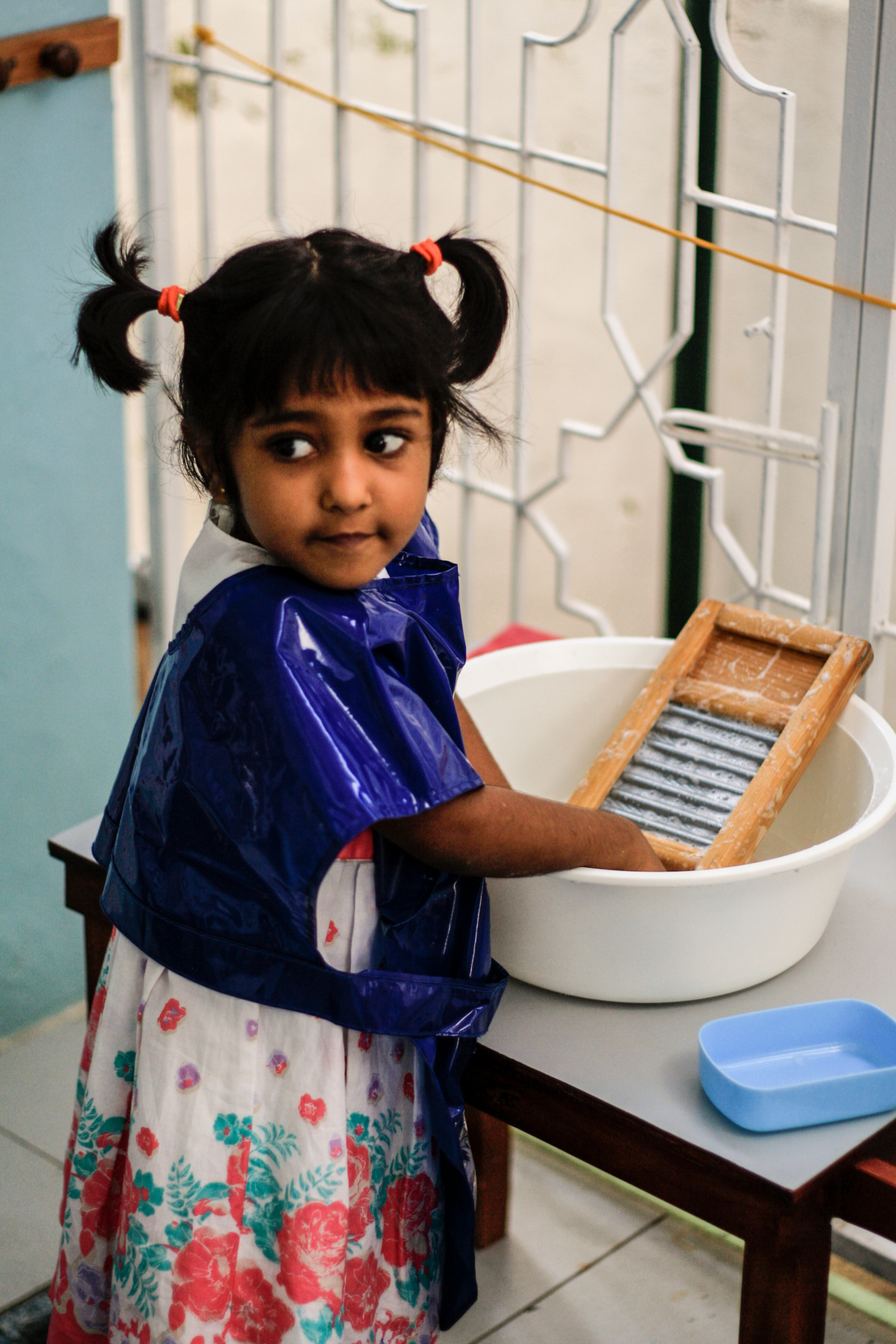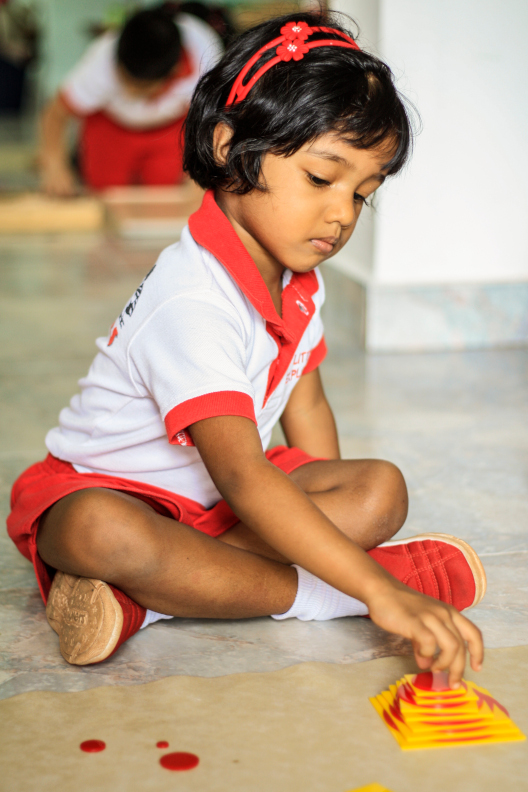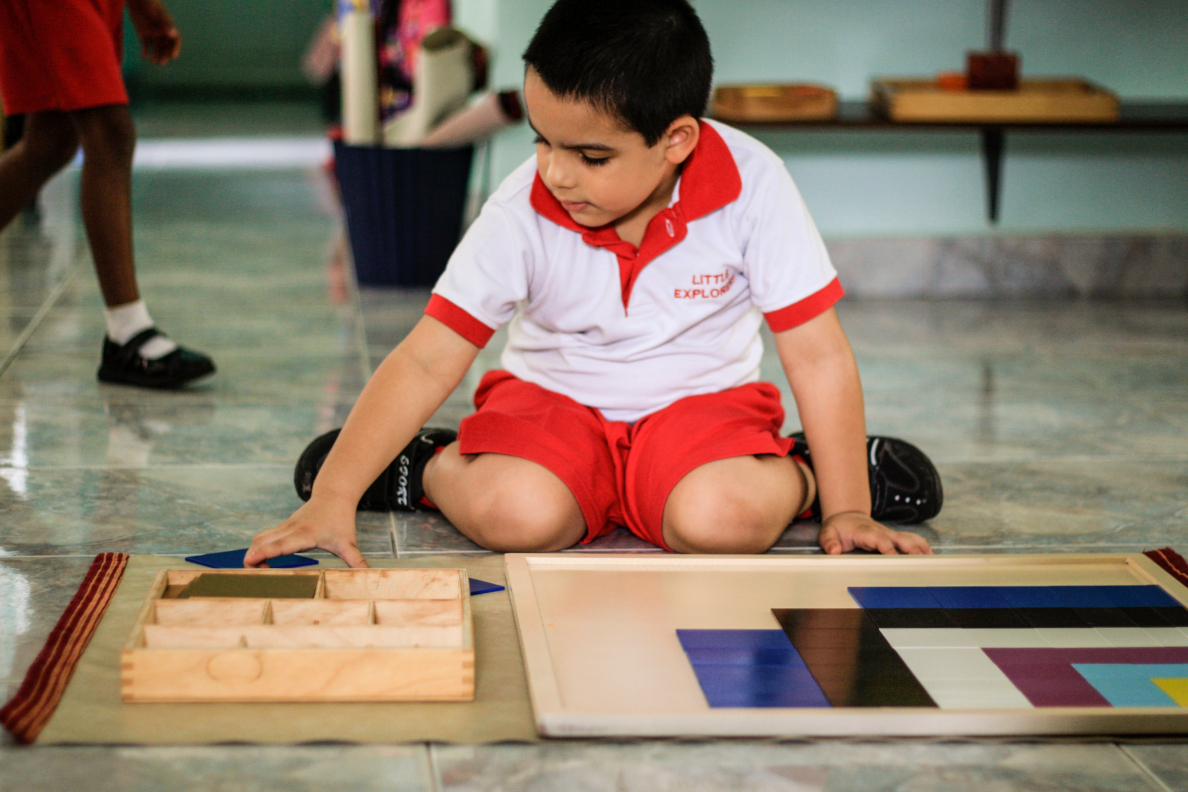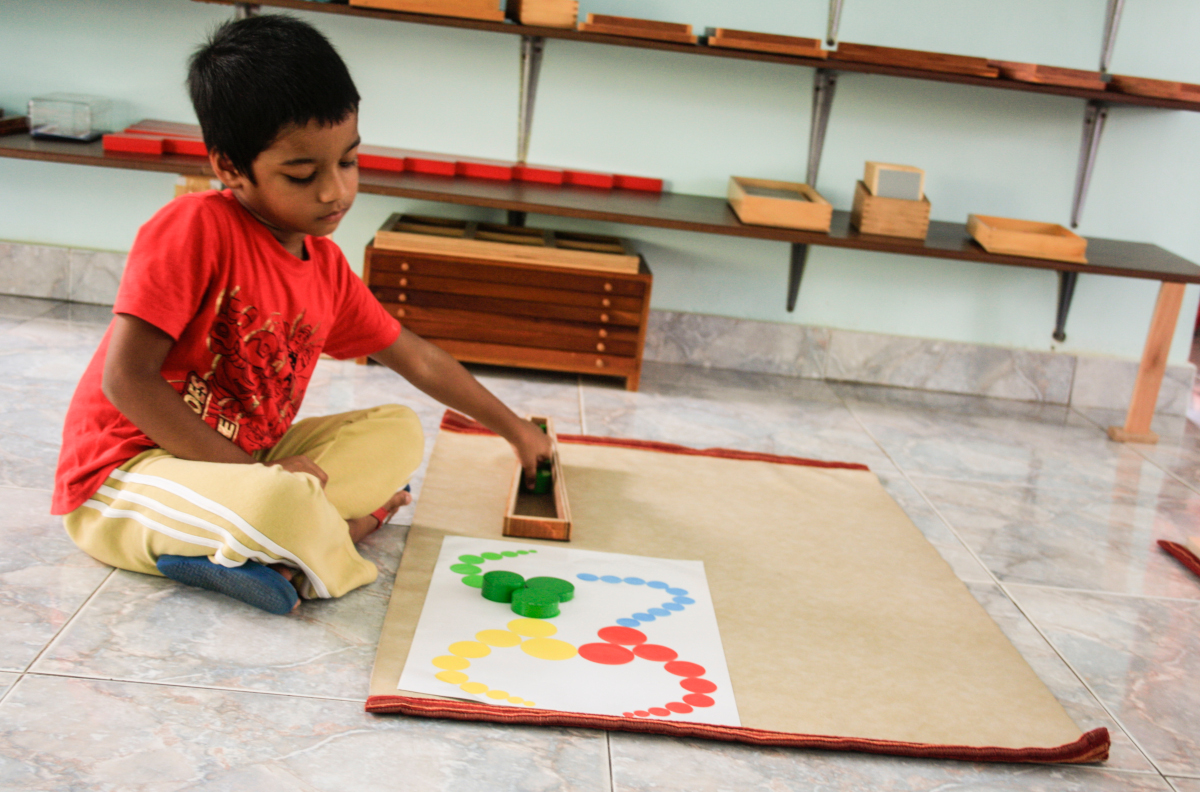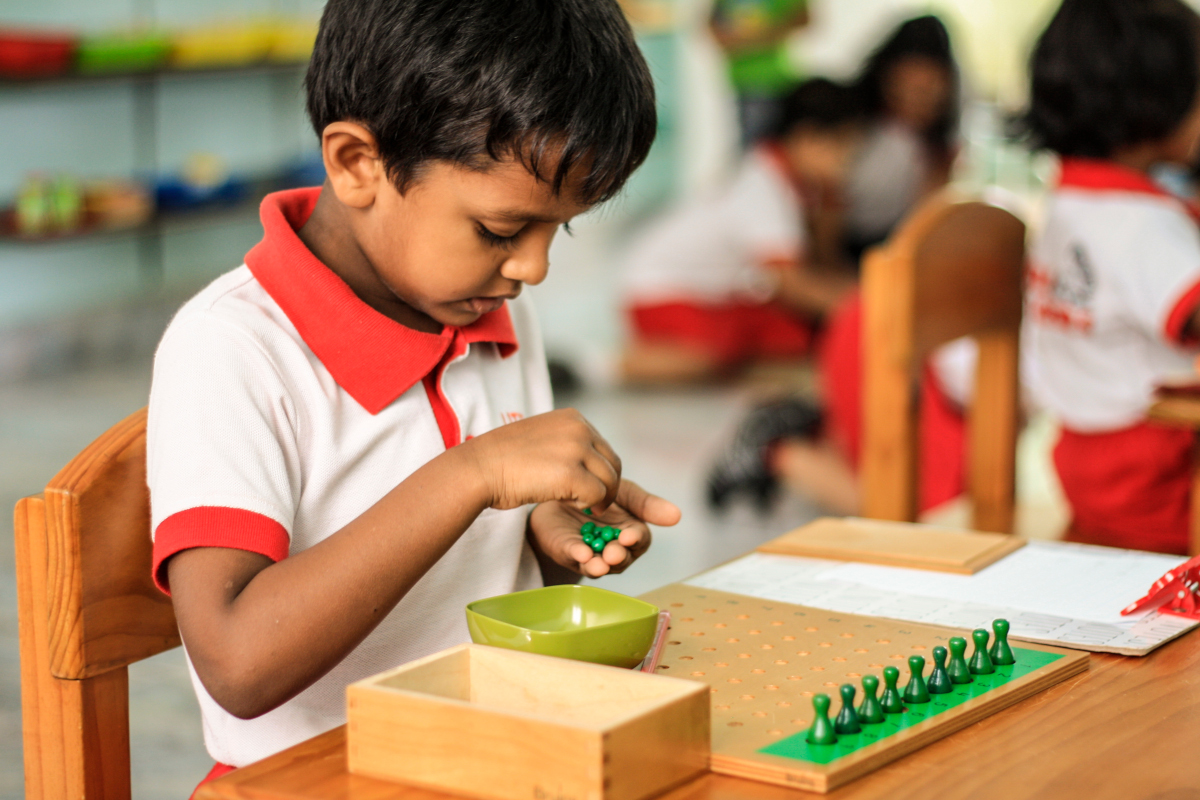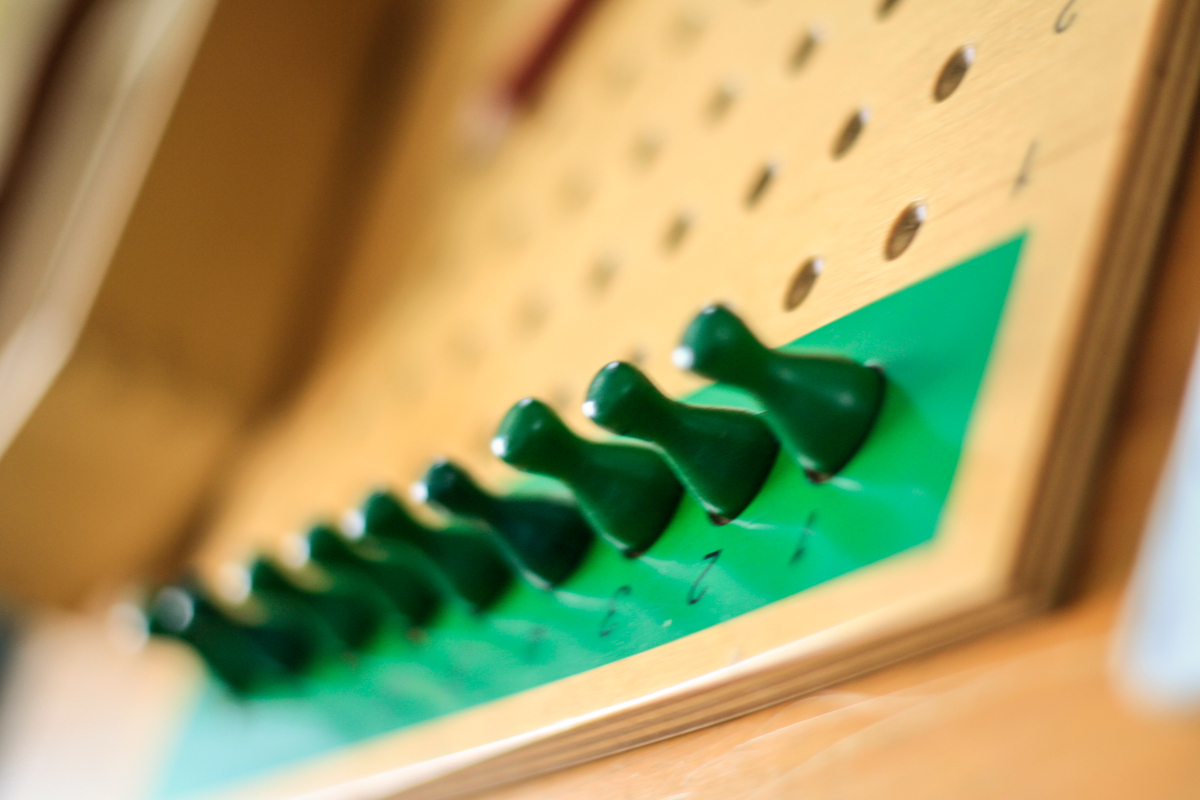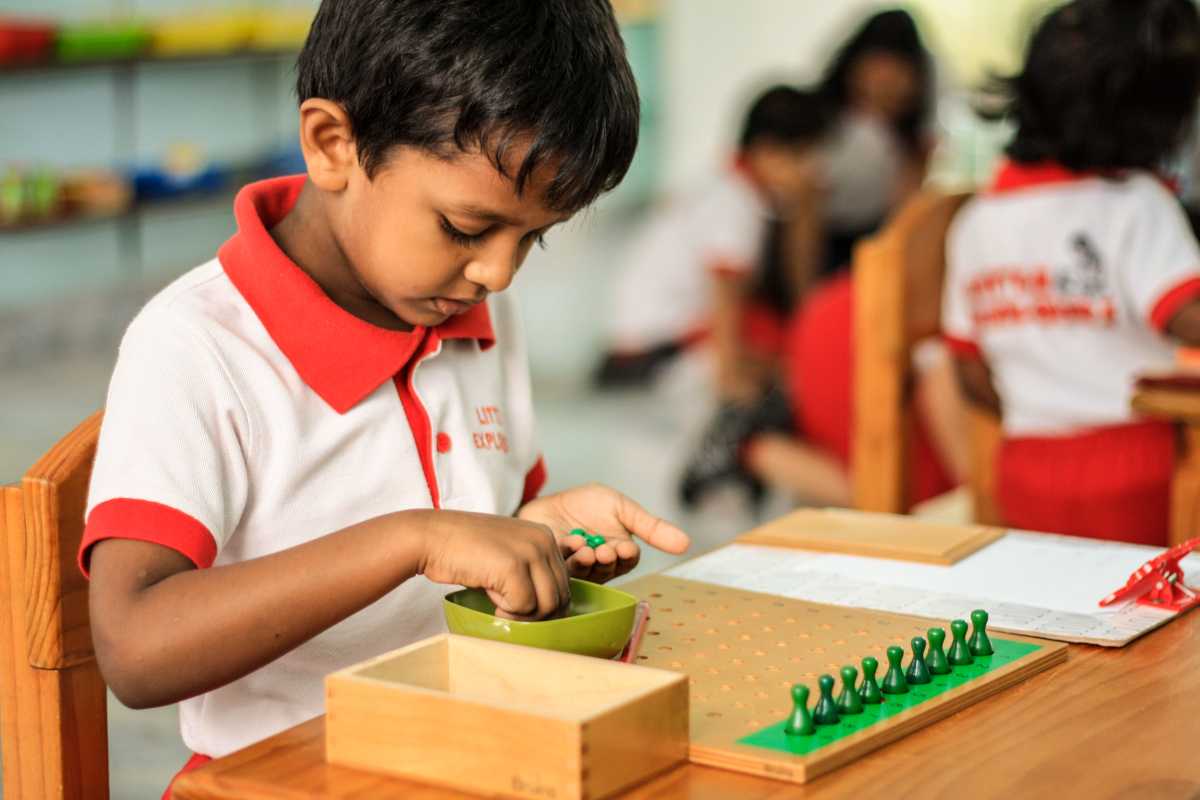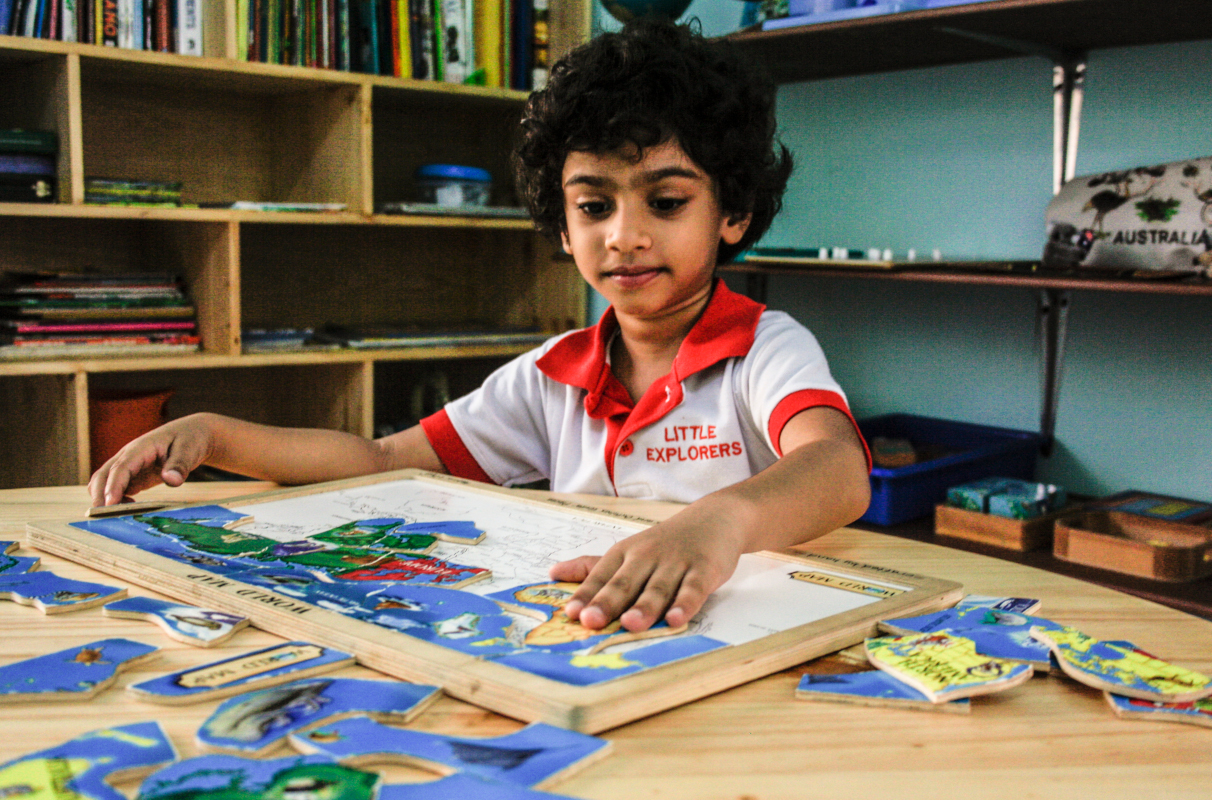Montessori Education
Age group: 2 ½ to 5 years
Hours: 8 am – 12 noon
Montessori education is an approach to life rather than an approach to education alone. If the attributes listed below are what you would wish for your child, then the Montessori method is for you and Little Explorers is definitely the place for your child to take his first steps in education.
- Awakening the child’s spirit and imagination
- Encouraging his normal desire for independence and high sense of self-esteem
- Development of kindness, courtesy and self discipline that will allow him to become a fully fledged member of society.
- Helping him learn how to observe, question and explore ideas independently
- And, having created a spirit of joyful learning, helping him to master the skills and knowledge of his society.
We warmly invite you to visit and observe the children at work and play. Please feel free to contact us for an appointment.
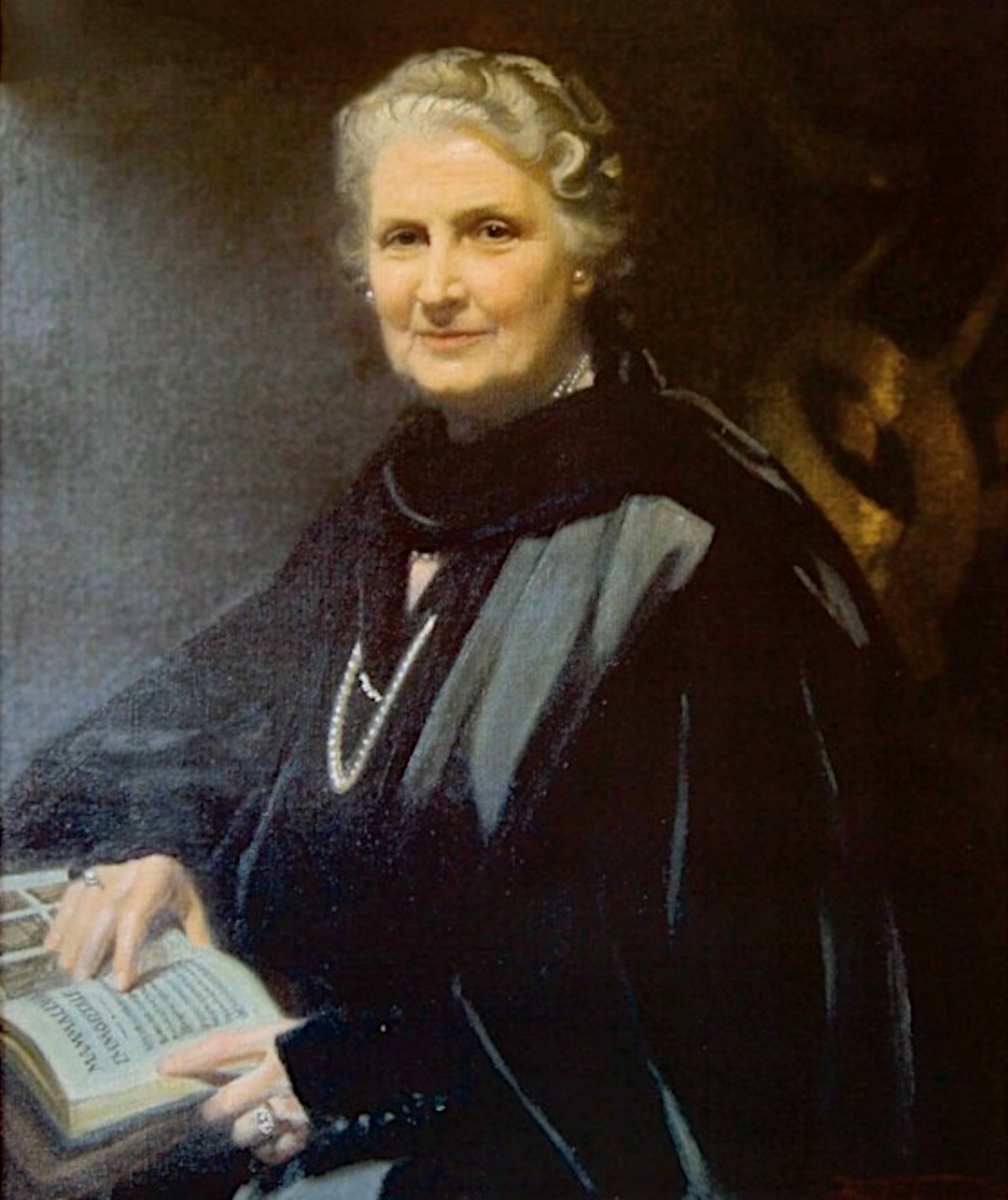
Montessori Curriculum
Little Explorers is equipped with a wide variety of Montessori material designed to develop a child’s skills. Specific units introduce the child to the following areas:
Each material isolates one concept or skill and the child is naturally drawn to work with it. A child can normally check his own work and this is termed a built-in “control of error”. The intention of the materials is not to keep the children dependent on these artificial learning aids forever; they are used as tools to help children work and learn at their own pace, to see abstract ideas presented in a very concrete, three-dimensional way, and to help them grasp and understand what they are working on. Montessori students learn not to be afraid of making mistakes. They quickly find that few things in life come easily, and they can try again without fear of embarrassment.
PRACTICAL LIFE
This area of the curriculum is to invite the young learner to act and work on real life tasks that foster independence, coordination, order and concentration. It is in a sense the doorway to the Montessori curriculum. The child may choose from many attractively displayed objects familiar to him. These include a variety of items commonly used in the tasks of daily living, like eating, dressing, cleaning and caring for the environment.
SENSORIAL
The child’s intellect does not work in isolation, but is closely bound up with his senses. The sensorial materials comprise of a series of objects, grouped together according to some physical quality, such as colour, shape, size, sound, texture, etc. The child will learn to recognize and identify these.
ARITHMETIC
The satisfaction of discovery leads to an enthusiastic interest in numbers when the child is able to demonstrate the fundamental mathematical operations, rather than simply being told seemingly dull and meaningless facts. He physically holds the quantities that he sees represented by written symbols. He combines the materials, counts, separates and compares them while visually grasping and reinforcing the ideas that are concrete rather than abstract.
LANGUAGE
The activities for Language help to foster vocabulary development, communication skills, writing and reading readiness.
The child begins by exploring the sounds that compose words and by relating them to the letters of the alphabet. In the Montessori method, writing precedes reading, as the children explore with drawing and forming letters. The process of learning how to read should be as painless and simple as learning how to speak. Dr Montessori’s research confirmed what observant parents have always known: children learn best by touch and manipulation, not by repeating what they are told.
CULTURE
The Montessori cultural materials provide individual activities, which help the child to acquire knowledge in the areas of Biology (Botany and Zoology), Geography, History and Science.
Cultural education helps the child develop his own personality, adapt to his own culture, and become an independent, useful member of his society.
Appreciation of Music, Nature and Art enrich the curriculum and contribute to the child’s growth.

